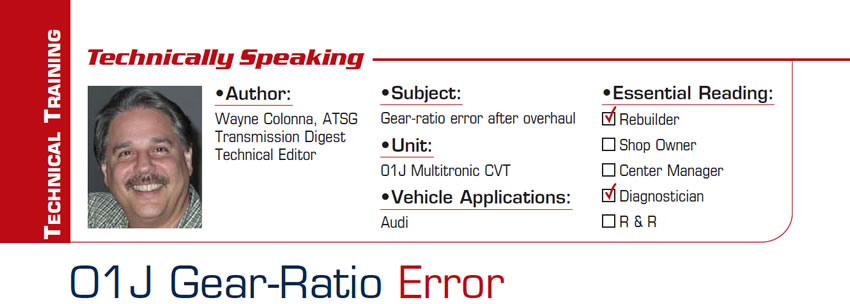
Technically Speaking
- Subject: Gear-ratio error after overhaul
- Unit: 01J Multitronic CVT
- Vehicle Application: Audi
- Essential Reading: Rebuilder, Diagnostician
- Author: Wayne Colonna, ATSG, Transmission Digest Technical Editor
During the recent Showpower Expo in Dallas, I was speaking with a good friend, Eddie Rose, from the UK who works on many 01J/0AW Multitronic continuously variable transmissions in Audi vehicles. He informed me of a problem he ran into while working on one of these that I just had to pass along to all those who are working on them here. This problem had Eddie stumped for a while but he finally sorted it out, and it was, of course, a simple solution to what had been a puzzling problem.
After an overhaul, the problem he encountered was a gear-ratio error that set only when the vehicle was cruising with the CVT in the highest ratio possible. Since there are various input ratios and final-drive ratios with this style of CVT (see examples in figures 1 and 2), one could easily think an incorrect unit or parts were put in. However, in Eddie’s case this did not occur.
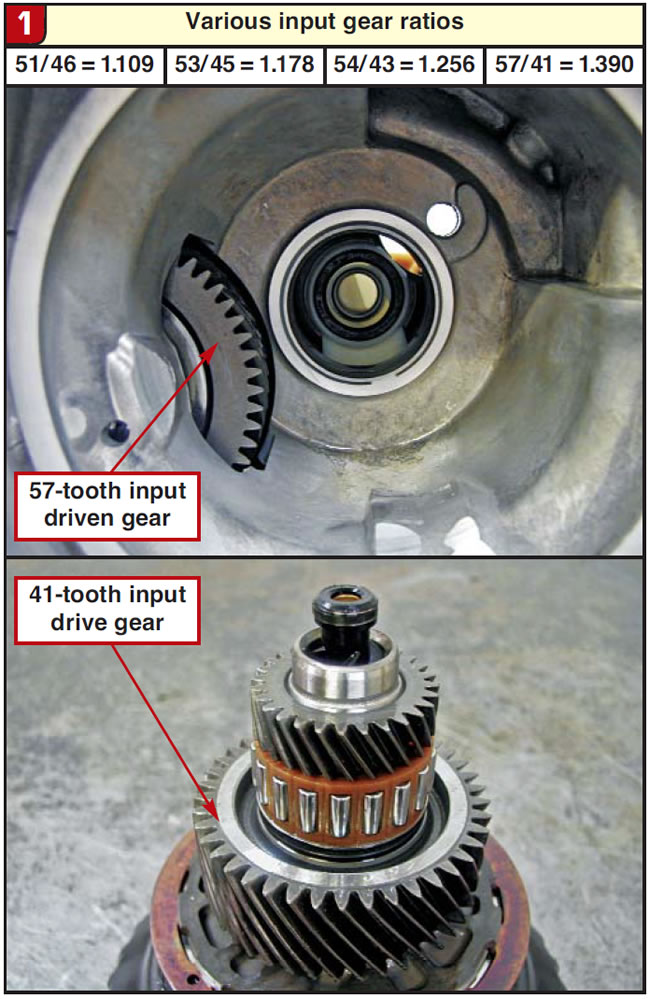

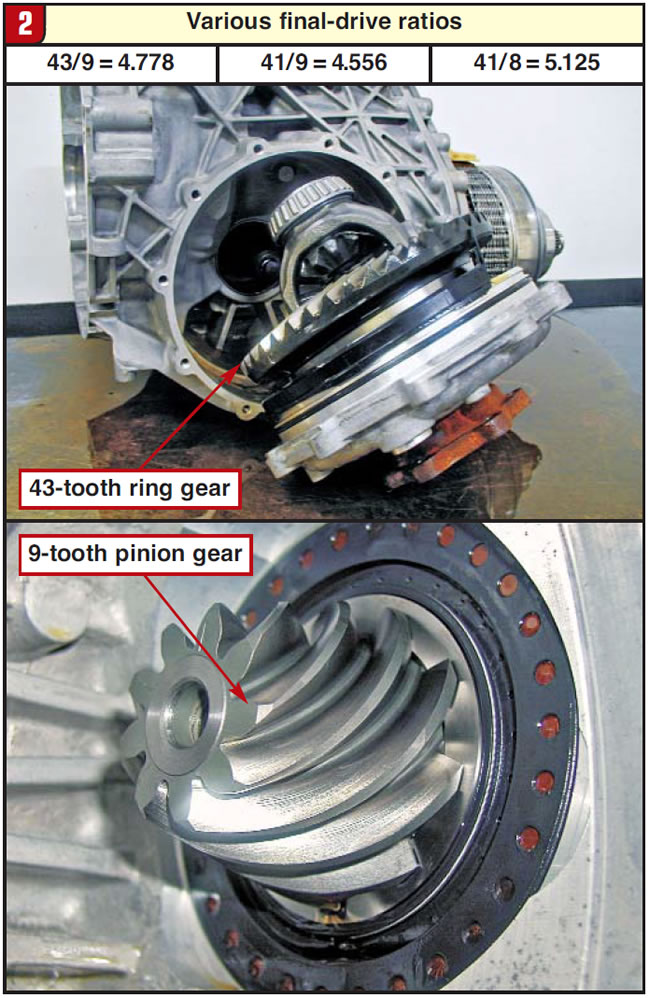
The next thought would be that the transmission is actually slipping for some reason. Yet the slipping code occurred only during a highway cruise in the highest ratio possible. With such a peculiar circumstance in which this ratio code was setting, a technician might easily think that there was an electrical problem rather than a hydraulic or mechanical problem. Since this was not the type of problem the unit came in for originally, this too seemed to be ruled out as a possibility.
Since the one hard part Eddie did change in this transmission was the chain (Figure 3), he decided to look into whether there were any differences. And this is where he found the cause of his gear-ratio problem.
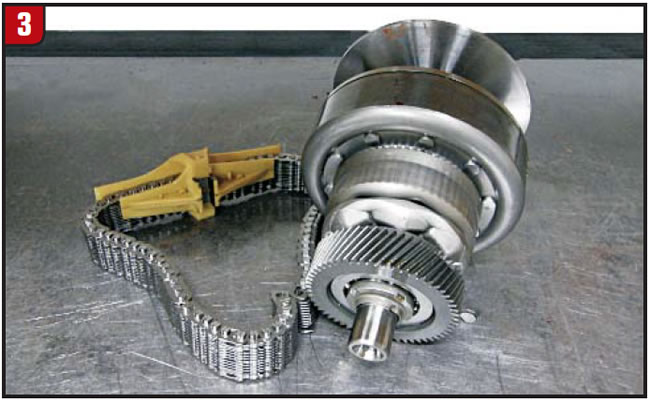
He discovered that there are chains of two different widths (Figure 4): 34mm (1.34 inches) and 38mm (1.50 inches).
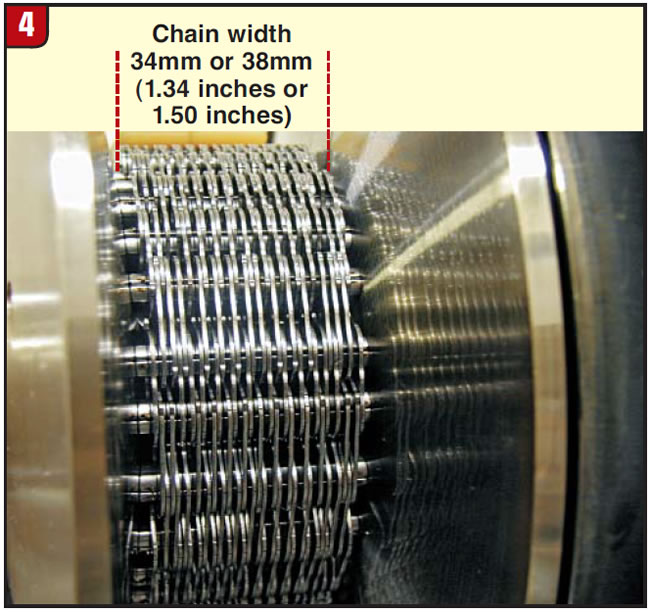
Apparently, with a CVT having infinite ratios from a low-ratio launch to the high-ratio cruise, the computer will not sense a ratio problem during the various ratios as it moves from low to high to low. But once the transmission settles into a specific ratio that the computer can detect for a long-enough time, the gear-ratio-error code will set. And that is what happened here; an incorrect-width chain will alter the pulley ratio, which was detected when it reached its maximum ratio during a cruising speed.
There are no charts that indicate whether a specific CVT model takes a 34mm or 38mm chain. So if you are to replace the chain, you should measure the original and order a new one according to the year, make, engine size and transmission code. The three-digit transmission code, such as JZT or GYJ, is on the bottom side of the case (Figure 5).
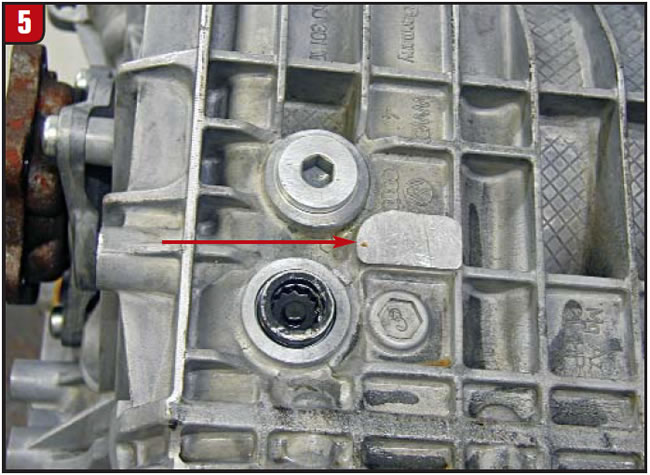
Thanks, Eddie!














